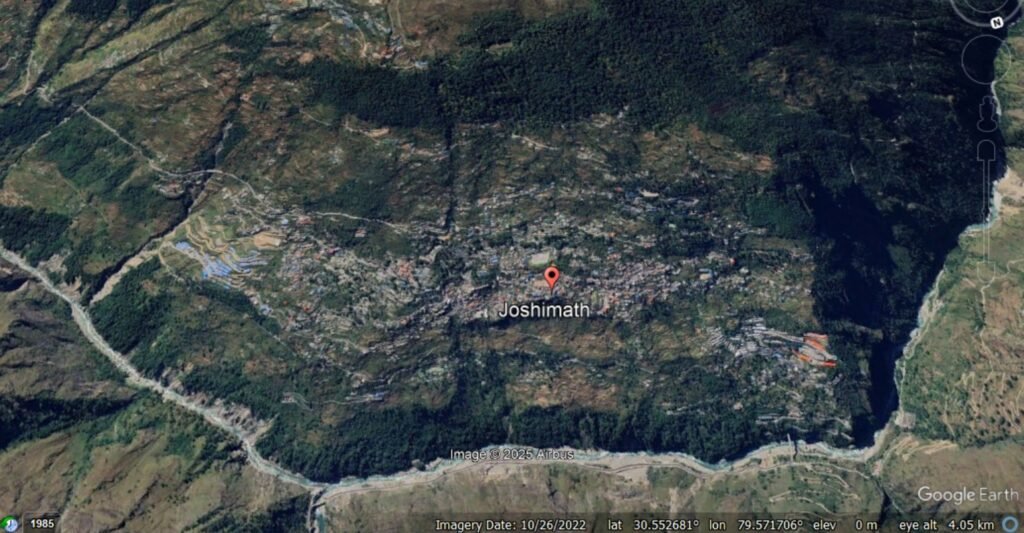

A new paper (Dalal et al. 2025) in the journal Engineering Geology examines movement of a major landslide complex in India. It shows that the slope reactivated in 2018, probably as a result of the loss of vegetation and poor management of water.
Loyal readers will remember a series of posts that I made back in early 2023 regarding accelerated movement of the complex landslide system located beneath the town of Joshimath located in the Himalaya in Uttarakhand, India. At this time, there was a significant increase in the movement rate of the landslide, causing substantial damage to structures within the town.
Joshimath is located at [30.5526, 79.5628]. This is a Google Earth image of the town in 2022. The complex landslides in the area are quite easy to see:-

A very nice paper (Dalal et al. 2025) has been published in the journal Engineering Geology. The authors have used InSAR to examine the long term movement pattern of the landslides – the InSAR data extends back to 2017. In it, they demonstrate that the slope did indeed undergo a phase of rapid movement in early 2023, and they link this to heavy rainfall that occurred in October 2022, which increased the pore water pressure in the slope.
But there are some interesting details in this piece of work. First, the slope actually started to move in 2018, and showed a seasonal pattern of deformation until the rapid movement even in 2023. The authors link this reactivation of the landslide at Joshimath to progressive urbanisation and removal of the vegetation canopy – modelling indicates that the factor of safety of the slope has been notably reduced by this effect. This is quite surprising as the failure at Joshimath is deep-seated, where vegetation does not normall play a major role.
Second, the analysis also highlights that “mismanaged groundwater seepage and blocked drainage paths further exacerbated slope weakening.” This is a common problem in rapidly developing Himalayan communities.
Finally, and most worryingly, Dalal et al. (2025) indicate that the slope could be undergoing progressive failure towards a catastrophic collapse. They have modelled runout scenarios for the slope, which indicate that such an event would threaten the Tapovan Vishnugad hydropower project downstream.
All of this indicates that action is needed at Joshimath. If a large-scale mitigation project is not possible (and I recognise that this would be extremely expensive and very challenging), efforts should be made to manage water (and drainage) across the whole area, and the slope should be monitored in real time.
Reference
Dala, P. et al. 2025. Deformation dynamics and hazard of slow-moving landslides: The 2023 Joshimath event, Uttarakhand Himalaya. Engineering Geology, 354, 108201. Doi: https://doi.org/10.1016/j.enggeo.2025.108201
Text © 2023. The authors. CC BY-NC-ND 3.0
Except where otherwise noted, images are subject to copyright. Any reuse without express permission from the copyright owner is prohibited.






